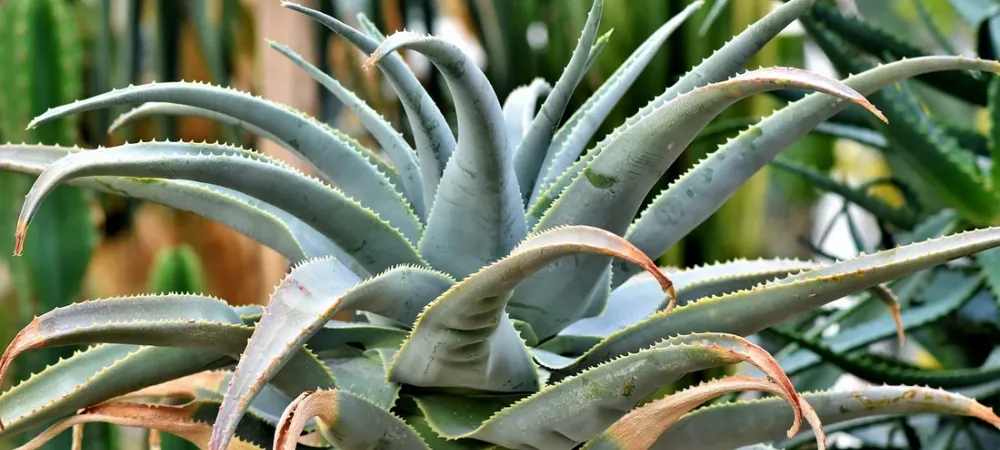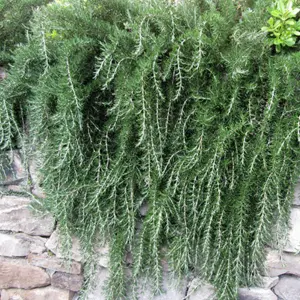Five Drought-Resistant Plants to Make Your Fort Worth Lawn Stand Out

Living and working here in Fort Worth, Texas, we are used to dealing with drought and having year-round water restrictions. Add on to that our warm temperatures and dry climate, and maintaining a landscape can get quite difficult. While there are certain grasses, trees, and plants that are never going to be fit for this area, there is plenty that can grow and thrive in our desert-type yards. To help you design your perfect landscape, Gro Lawn has developed a list of five drought-resistant plants that are easy to grow and will make your Fort Worth area property thrive.
Trailing Rosemary

Staying true to its name, trailing rosemary adds an elegant feel to any landscape falling over rock beds, retaining walls, and fences. It contains pine fragranced foliage and small, pale, blue to white flowers that appear along its branches from March through May, which are especially attractive to bees. Once established, it makes for beautiful ground cover, has high drought resistance, and works well with other drought-resistant vegetation. If you are a fan of this vivacious plant, be sure to place it in well-drained soil in a location that receives six to eight hours of sunlight a day.
Desert Willow
A small, delicate tree, the desert willow makes an excellent addition to any Forth Worth area home. It is a flowering tree with long slender leaves that droop down the sides like a willow tree. These graceful leaves can grow up to 12 inches long, adding elegant beauty to your backyard. The scented flowers grow in clusters on the branch tips from spring through fall and can be found in violet, pink, white, and yellow shades. These colorful additions attract pollinators of all sorts making your landscape filled with hummingbirds, bees, and butterflies. Due to its desert heritage, it requires full sun and well-drained soil. Use them to create a privacy fence, as a stand-alone, or to add a slice of beauty to your backyard.
Fountain grass
This enchanting beauty is named for its leaves that cascade downward in a fountain-style appearance. With charm and versatility is produces a clump of narrow shiny, green leaves that fade to golden yellow in the fall. Most home or business owners use it along borders or to accentuate other landscape features. It makes a great backdrop behind a hardscape element that sits directly in the sun. Fountain grass is easy to care for. It thrives in full sun and is extremely adaptable to our hot, dry climate. Like the other two, it also prefers well-drained soil. Once established, it does not even need regular watering except during times of extreme drought. If you are the type of person who likes to plant and then forget it, this lively plant may be for you.
Weeping Bottlebrush
As its name suggests, the bottlebrush plant has bright pink flowers that resemble the bristles of a bottle brush. Its leaves hang off its branches in the same manner as the weeping willow. While it can grow up to 15 feet tall, if it is not pruned, it will form into a round bush. The large, bushy red flowers are a collection of red stamens produced throughout the year and are very attractive to hummingbirds and butterflies. The fruit is a brown hard capsule. Before planting this colorful lawn ornament, be sure no one in your house is allergic because it does produce pollen. If you find this is the right lawn enchantment for your back or front yard escape, plant it in full sun with well-drained soil. Too much moisture can cause canker or root rotting.
Agave

Everything about the look of an agave plant screams desert. Native to the Lonestar state, they grow best in warm regions like ours that experience dry spells. There are different sizes of agave plants, with larger ones growing up to 10 feet or more in height and width. They are slow-growing succulents with large leaves that end in pointy tips. Agave foliage tends to be blue to grey-green, and a few even have gold or white markings. When an agave plant is near the end of its life cycle, a tall flower stalk grows out of its center. The flowers are bell-shaped and white, yellow and green. For most, once the flowers produce berries, the plant dies. Like the others, plant this native in a lot of sun and ensure the soil is well-drained. But pet owners beware. Agave plants often have sharp thorns and prickly edges and may not be the best bet for little Fido. Then again, maybe this is the plant that will finally keep your cat from destroying it.
Keep These Lawn Ornaments Thriving With Tree and Shrub Care Services at Gro Lawn
Need help deciding which of these drought-resistant plants are best for your Forth Worth area lawn? Contact the professionals at Gro Lawn. Then invest in our tree and shrub care services to help keep these special lawn ornaments thriving. We offer trimming, pruning, fertilization, mulch replenishment, and insect and disease control. Contact us to find out how we can help maintain and protect your beloved trees and shrubs. Visit our website or fill out our online form.
For more articles like this one, follow our blog, where we talk about all things lawn care, tree and shrub care, and pest control. And don’t forget to hit us up on Facebook and check out our latest projects via YouTube.
